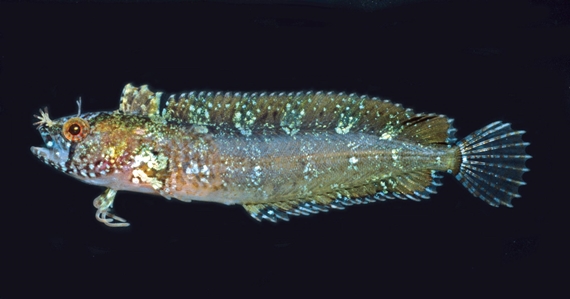General Description
Body moderately deep; two dorsal fins connected at most near base, the first arising over middle of gill cover; jaws reaching to between middle and rear edge of eye; orbital tentacle long, thin; nasal tentacle large, multilobed. Males yellow to brown with a narrow brown bar extending below each eye, dorsal-fin tips white; females greenish brown with five thin, white bars extending onto dorsal and anal fins. To 9 cm.
Biology
Like many other fishes in the family Clinidae, this species has internal fertilisation and gives birth to live young.
Habitat
Amongst macroalgae on shallow rocky reefs in depths of 0-10 m.
Reefs
Distribution guide
South-eastern Australia, including central and eastern Victoria.
Species Group
Fishes › Weedfishes and snakeblennies
Depth
Shore (0-1 m)
Shallow (1-30 m)
Water Column
Max Size
9 cm
Commercial Species
No
Global Dispersal
Native to Australia
Conservation Status
- DSE Advisory List : Not listed
- EPBC Act 1999 : Not listed
- IUCN Red List : Not listed





